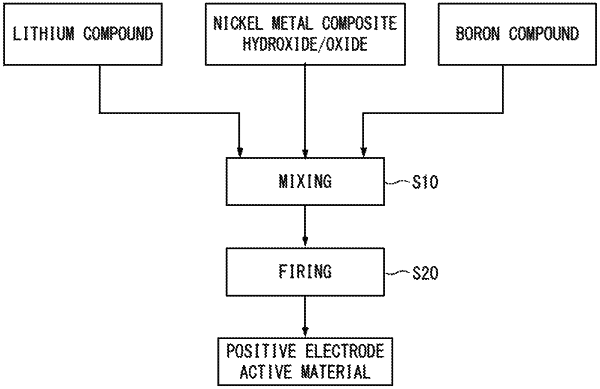| CPC H01M 4/525 (2013.01) [H01M 4/131 (2013.01); H01M 4/1391 (2013.01); H01M 4/505 (2013.01); H01M 10/0525 (2013.01); H01M 50/46 (2021.01); H01M 2004/027 (2013.01); H01M 2004/028 (2013.01)] | 4 Claims |

|
1. A method for producing a positive electrode active material for a non-aqueous electrolyte secondary battery, comprising a lithium-nickel composite oxide represented by general formula (1): LiaNi1−x−yCoxMyO2+α (in which 0.05≤x≤0.35, 0≤y≤0.10, 0.95≤a≤1.10, 0≤α≤0.2, and M represents at least one element selected from Mn, V, Mg, Mo, Nb, Ti, W, and Al) and Li3BO3, the method comprising:
mixing a boron compound, at least one of a nickel composite hydroxide and a nickel composite oxide, and a lithium compound to obtain a lithium mixture; and
firing the lithium mixture in an oxygen atmosphere at a temperature of 715° C. or higher and 850° C. or lower to obtain a lithium-nickel composite oxide, wherein
the boron compound is mixed in an amount such that the content of boron is 0.001% by mass or more and 0.2% by mass or less with respect to the entire positive electrode active material, and
at least a part of a surface of the obtained lithium-nickel composite oxide is coated with Li3BO3,
a diffraction peak of Li3BO3 is only detected as a diffraction peak other than that derived from the lithium-nickel composite oxide in powder X-ray diffraction, and
the method is conducted without a step of reducing the content of boron from the lithium-nickel complex oxide such that the content of boron from the lithium mixture is maintained in the entire lithium-nickel complex oxide produced by the method.
|